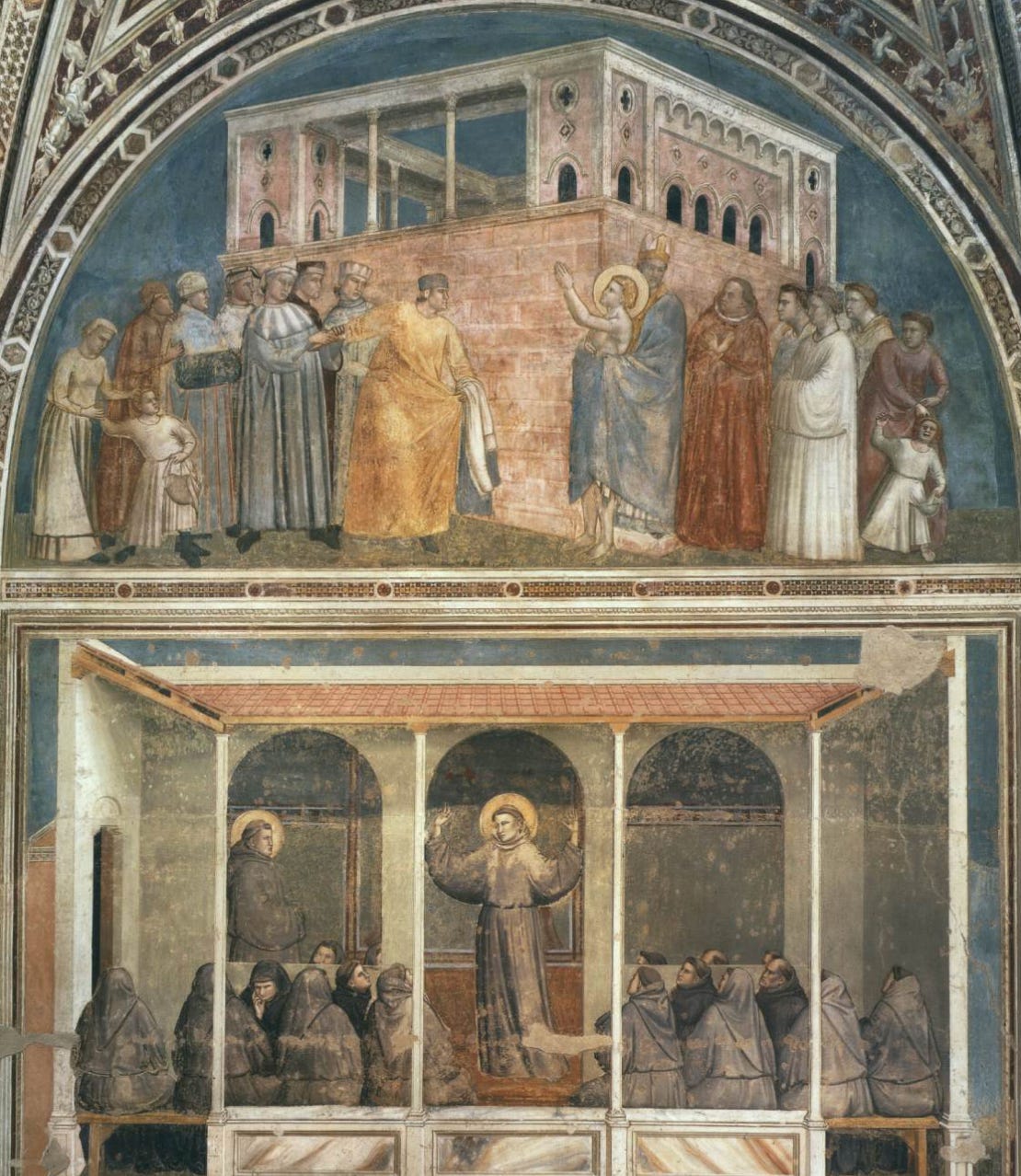Join us (remotely) in Florence
From June 8-14, 2025 I’ll be in Florence with a small group of fellow adventurers, looking at developing a social algorithm for the generation of collective genius.
It may turn out that this is closer to a social alchemy than an algorithm, I’m not sure yet. Mabye is an alchemithm. We have been working on a series of informal case studies of moments in history where there was a disproportionate efflorescence of collective genius in a localized place over a short time.
We have several moments, models in mind, including the Florentine Renaissance, Black Mountain College, the Chelsea Hotel in NYC in the seventies and eighties, possibly Silicon Valley (though I confess I’m not that fond of many of its outputs).
Could this be catalyzed on purpose? What are the contextual conditions required to invite this to happen?
Have a look at this fresco from the Bardi chapel in Florence's Santa Croce Basilica, created by Giotto between 1325-1328.
Giotti, Bardi chapel, 1325-1328- before the birth of linear perspective
The image is stunning, but strange to behold. In the upper panel, the building– is it a temple? – is oddly misshapen. It is attempting to be 3-dimensional, but there is something wrong with the vanishing points. The figures are slightly disproportional, particularly the children. Heads rest atop bodies at odd angles, garments are heavy drapery obscuring form. Similarly, in the lower image, straight-facing, the roof of the church where a haloed saint is preaching is distorted at the wings of the portico. If you were standing off to one side, you might see the side angle of the roof appearing to slant like that, but from in front of the roof you would not see both sides doing this. At this moment, they simply had not figured out how to translate 3 dimensions onto a 2-dimensional surface. Neither did Giotto understand the skeletal anatomy of the human form, nor the way that it moves. The poses are static, even when they are meant to imply motion. The lighting is uniform, but lighting is never uniform out of doors, because lights cast shadows, and there are no shadows here. Textures, such as the stones of the temple, or the tiles? of the roof below, are not accurately textured.
Then, along comes Filippo Brunelleschi, who has, by 1415, developed linear perspective.
Keep reading with a 7-day free trial
Subscribe to The Hearth Science Substack to keep reading this post and get 7 days of free access to the full post archives.



